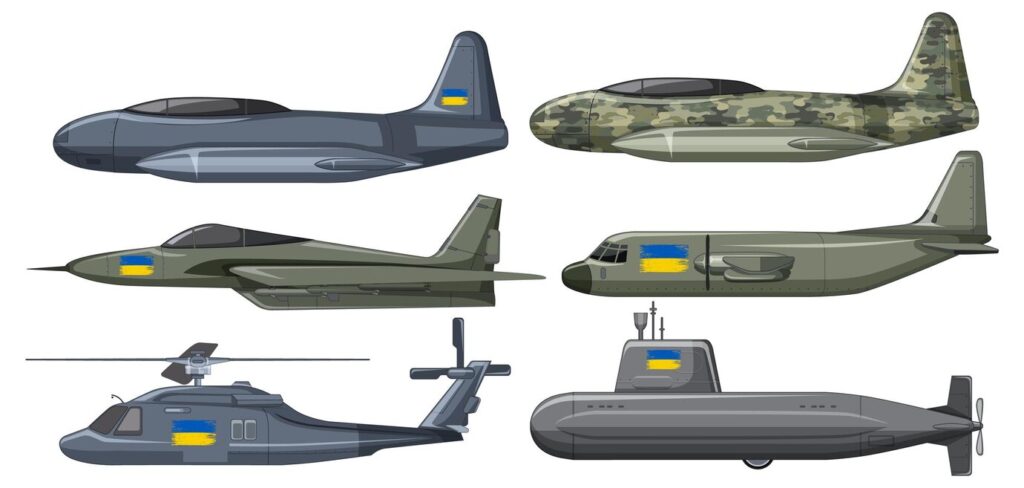The Fairey Gannet was designed in response to a 1945 requirement by the British Admiralty for a carrier-based anti-submarine aircraft capable of operating under various sea conditions. Fairey Aviation, a prominent British aircraft manufacturer, created the Gannet to fulfill this need, aiming to produce an aircraft that could handle extensive patrols, be launched from aircraft carriers, and operate independently to detect and attack enemy submarines. The Gannet made its maiden flight in 1949 and entered service with the Royal Navy’s Fleet Air Arm in the early 1950s.
Unique Twin Mamba Engine Configuration
One of the Gannet’s standout features was its innovative Armstrong Siddeley Double Mamba turboprop engine. This twin-engine design, housed in a single nacelle, powered two sets of contra-rotating propellers. The Double Mamba could operate both engines simultaneously for full power, or run on a single engine to conserve fuel while maintaining stability and propulsion, which was ideal for prolonged ASW missions. This engine configuration gave the Gannet distinct efficiency and range, making it a highly functional aircraft for maritime patrols.
Design Characteristics
The Fairey Gannet was structurally distinctive with a mid-wing design and large folding wings, which allowed it to be stored efficiently aboard aircraft carriers. Its bulky fuselage provided ample space for ASW equipment, such as radar, sonar, and other detection devices, as well as torpedoes and depth charges. Additionally, the Gannet featured a three-person crew layout, with a pilot, radar operator, and observer. The placement of the cockpit and the bubble canopy provided the crew with good visibility, which was especially important for spotting potential underwater targets and monitoring surrounding areas during low-altitude patrols.
Key Variants of the Fairey Gannet
The Fairey Gannet was developed into several variants, each tailored to specific roles:
Gannet AS.1 and AS.4: These were the primary anti-submarine warfare (ASW) versions, featuring radar and sonar equipment to detect submarines and carrying torpedoes and depth charges.
Gannet T.2 and T.5: These models were developed as training variants. The T.2 and T.5 had a modified cockpit for instructor and trainee use, enabling training for carrier operations and other specific skills needed for ASW missions.
Gannet AEW.3: This airborne early warning (AEW) variant emerged after the retirement of the earlier radar-equipped Fairey Skyraiders. The AEW.3 was fitted with a large radome under the fuselage, housing advanced radar systems to detect incoming aircraft or surface vessels. This variant became essential for extending the Royal Navy’s early warning capabilities until more modern systems arrived.
Gannet ECM.6: An electronic countermeasure variant that played a vital role in jamming enemy radar and communications. This model further demonstrated the adaptability of the Gannet platform, sowcasing its versatility in electronic warfare.
Service History and Global Use
The Fairey Gannet saw active service with the Royal Navy’s Fleet Air Arm throughout the 1950s and 1960s, performing patrols in areas where submarine threats were present. It became a workhorse in maritime surveillance, contributing significantly to NATO’s collective ASW capabilities during the Cold War.
In addition to the Royal Navy, other countries also adopted the Gannet for their fleets. For example:
Royal Australian Navy (RAN): The Australian Navy used the Gannet ASW variant for patrol and surveillance over the vast expanses of the Pacific, protecting its waters against potential submarine incursions.
German Navy: West Germany purchased Gannets to enhance its maritime patrol capabilities in the North Sea and Baltic regions, where detecting and monitoring Soviet submarines was a high priority.
The Gannet served diligently until the 1970s when advances in both aircraft technology and ASW equipment led to its eventual retirement. As technology progressed, the Gannet’s role was gradually overtaken by more modern jet-powered aircraft, which offered greater speed and upgraded electronic capabilities.
Legacy and Preservation

The Fairey Gannet remains an iconic part of British naval aviation history. Several Gannet aircraft have been preserved and can be found in aviation museums in the United Kingdom, Australia, and other parts of the world. These preserved models remind us of the era when propeller-driven ASW aircraft dominated the maritime skies.
A few Gannets are also still airworthy today and can be seen at airshows, where they impress audiences with their distinctive contra-rotating propellers and rugged design. The aircraft’s unusual appearance, combined with its technical achievements, continues to captivate aviation enthusiasts.
Conclusion
The Fairey Gannet was a remarkable aircraft in many respects, combining innovative engineering with practical maritime applications during a critical period in Cold War history. Its unique features, such as the Double Mamba engine and multiple specialized variants, allowed it to serve in several roles beyond its initial ASW design. Even though its active service days are long past, the Gannet’s impact on naval aviation and maritime defense remains significant, highlighting a period of rapid innovation and adaptation in aviation history.
FAQS
What was the primary role of the Fairey Gannet 772?
The Fairey Gannet 772 was primarily designed for anti-submarine warfare (ASW), equipped with radar and sonar systems to detect and engage submarines.
What made the Fairey Gannet’s engine unique.
The Gannet featured the Armstrong Siddeley Double Mamba turboprop, a twin-engine housed in a single nacelle, powering contra-rotating propellers. This setup allowed it to run on one engine to conserve fuel during long patrols.
Which countries used the Fairey Gannet besides the UK?
In addition to the UK’s Royal Navy, the Fairey Gannet was also operated by the Royal Australian Navy and the German Navy for maritime patrol and surveillance roles.
What were the different variants of the Fairey Gannet?
Key variants included the ASW versions (AS.1 and AS.4), training versions (T.2 and T.5), an airborne early warning model (AEW.3), and an electronic countermeasure version (ECM.6).
Is the Fairey Gannet still in use today?
No, the Fairey Gannet was retired from active military service in the 1970s. However, several have been preserved in museums, and a few are still flown at airshows.
